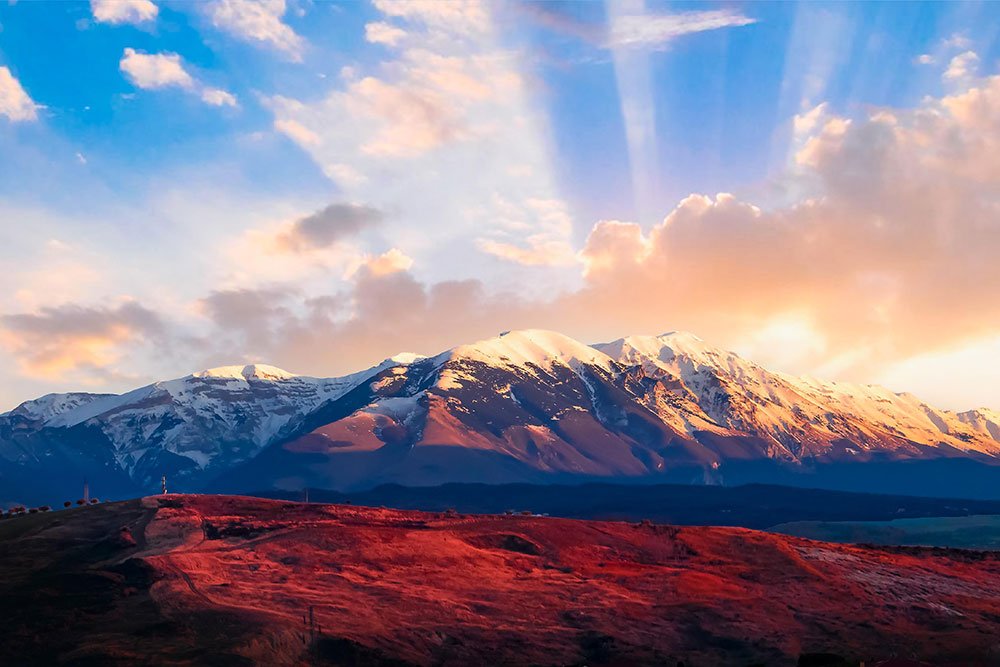
Majella National Park (Parco Nazionale della Maiella) is a 740 square-kilometre sized park located between the provinces of Chieti, Pescara and L鈥橝quila. The park is located high above sea level with over half of the land having an altitude of over 2,000 metres. This huge altitude helps to make Majella the second-highest mountain massif in the Apennines.
The park鈥檚 most notable mountains are Monte Porrara, the Pizi mountains and the mountains of Morrone and Mount Amaro, which is 2,800 metres high and the highest peak in Majella. There are 180 named mountains in the park.
The park is lucky enough to have over 2,000 species of flora; a third of all plant species present in Italy. Some highlights are the sticky-leaved pinguicula del Fiore, the thistle-like Centaurea tenoreana Willk and the Least Snowbell (Soldanella minima).
Tourists can visit several main sights in the park including the Grotta Sant'Angelo cave paintings, one of the deepest caves in Europe, Grotta del Cavallone. There are several tourist centres located throughout.
A must-see for the park is the Hermitage of San Michele in Pescocostanzo, dedicated to the archangel, St Michael. This is a small cave church, previously the home of Pietro da Morrone, a hermit who went on to become Pope Celestine V. After his death, the dwelling was transformed into a church.
The park is also known for its 500 km of hiking trails through the mountains. Some of the highlights include Majella鈥檚 historic town Roccacaramanico, a very snowy medieval village. It is a 'ghost hamlet' in that by the 1980s, the population had dwindled to just one resident. However, the population is now again on the rise.
At the foothills of the Majella mountain lies the town of Guardiagrele, a town listed as 'borghi pi霉 belli d'Italia' (one of the most beautiful towns in Italy) and known for copper, jeweller鈥檚 art and wrought-iron crafts. Be sure to also roam the Avello Valley. This deep valley has picturesque views of the surrounding area, as well as canyons and caves.
The most notable animal in the park is the Apennine wolf. There are about 10 packs in the Majella, approximately 70 - 80 individuals which makes it one of the largest populations in the world. The symbol of a wolf acts as the park鈥檚 logo.
Other unique animals living in the park are golden eagles, peregrine falcons, as well as an approximate population of twenty Marsican brown bears. The venomous Orsini鈥檚 viper snake, the red-billed chough, the European pine marten, the Corsican hare and the very rare European otter.
Majella is a UNESCO Global Geopark which, between 1998 and 2005, was the focus of a geoscientific research project, TaskForceMajella (TFM). The project examined geological structure and analysed fractures and faults. It was also one of 12 PAN Parks, which worked to preserve European areas of wilderness. However, the company is currently in liquidation.